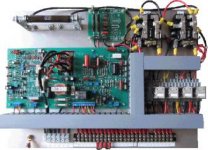Boeingone
Plastic
- Joined
- Mar 26, 2015
- Location
- Columbia Falls
Has anyone ever used a Beel Industrial DC motor retro-fit for a 10EE?
"The D510-FW allows you to retain the original configuration
of your lathe by keeping the DC Motor and headstock as is.
This unit is very user-friendly; It was designed to be installed
as easily as a plug n' play."
BICL - Single Phase Drives: Variator Series: C210

Sounds like it will work for me with single phase 220v in my shop.
Randy
"The D510-FW allows you to retain the original configuration
of your lathe by keeping the DC Motor and headstock as is.
This unit is very user-friendly; It was designed to be installed
as easily as a plug n' play."
BICL - Single Phase Drives: Variator Series: C210

Sounds like it will work for me with single phase 220v in my shop.
Randy

